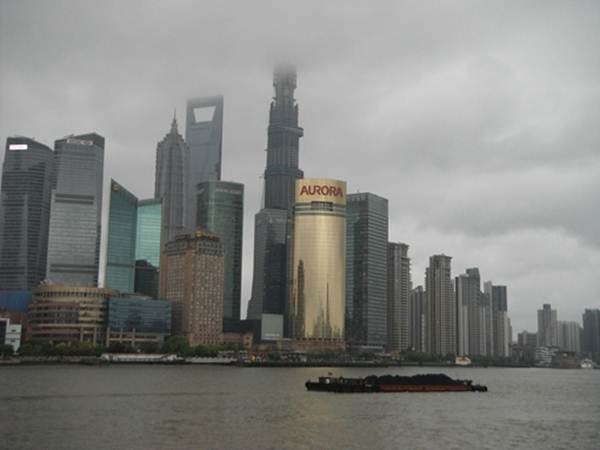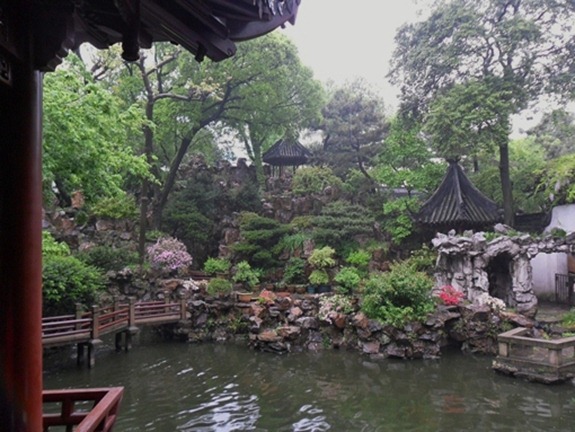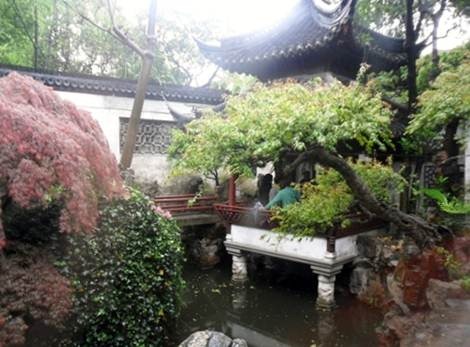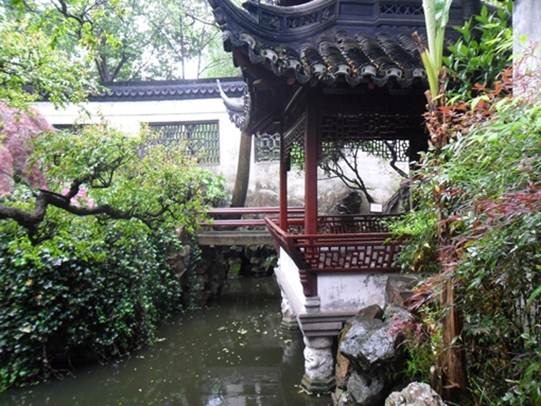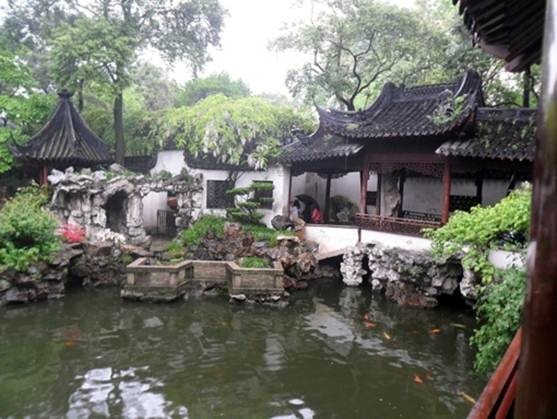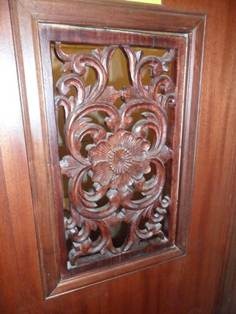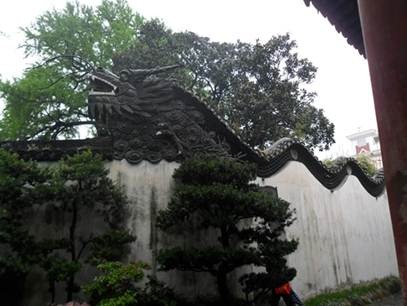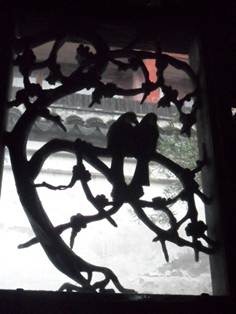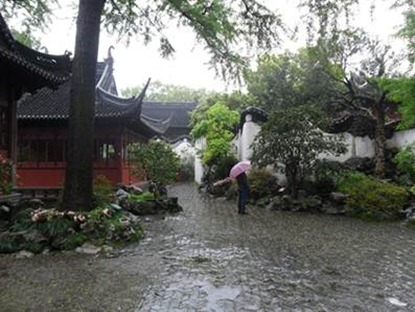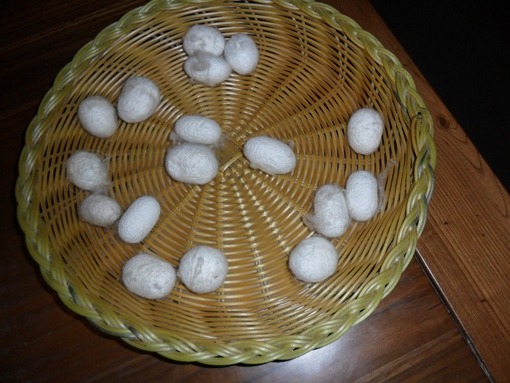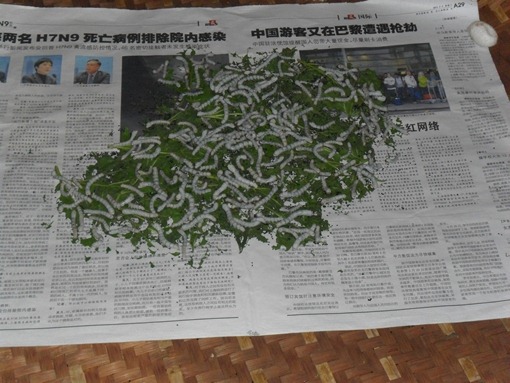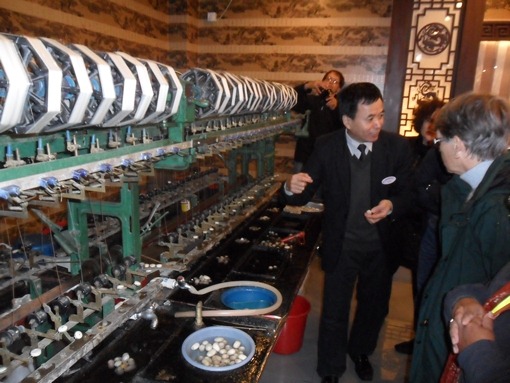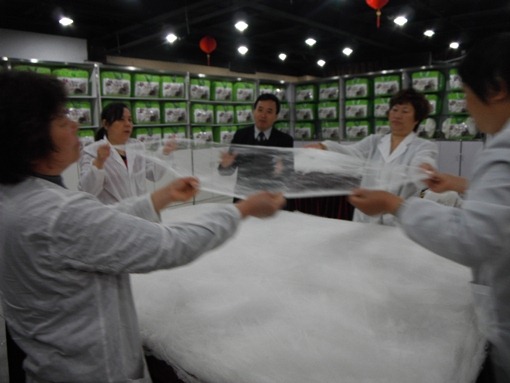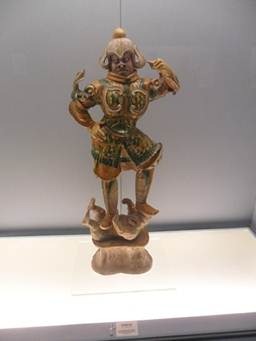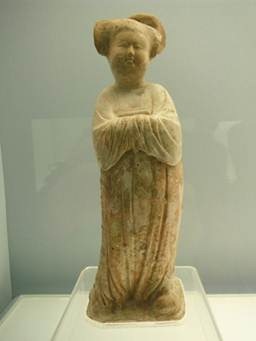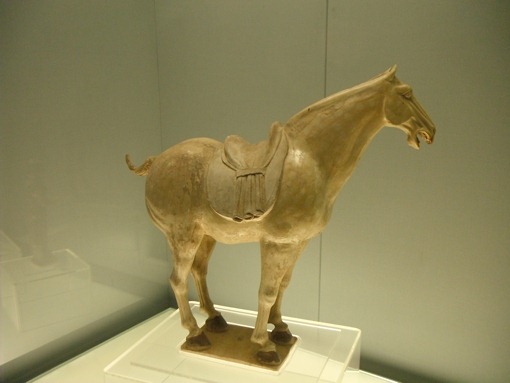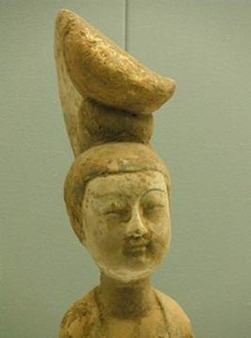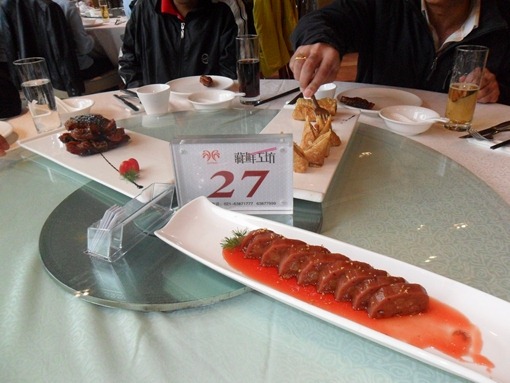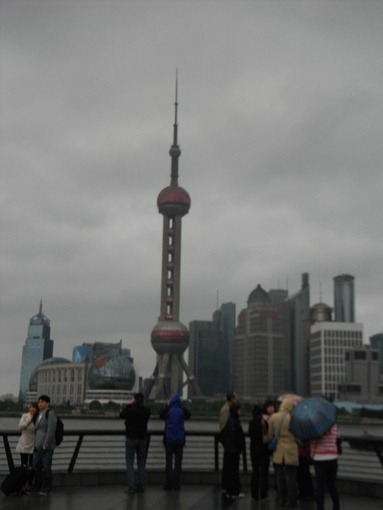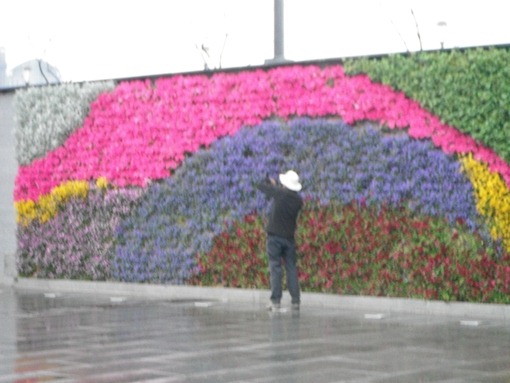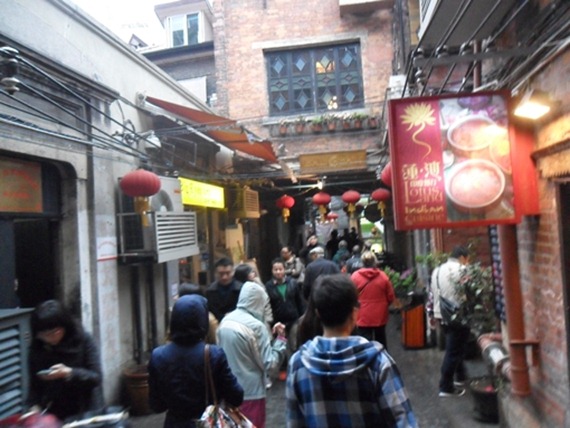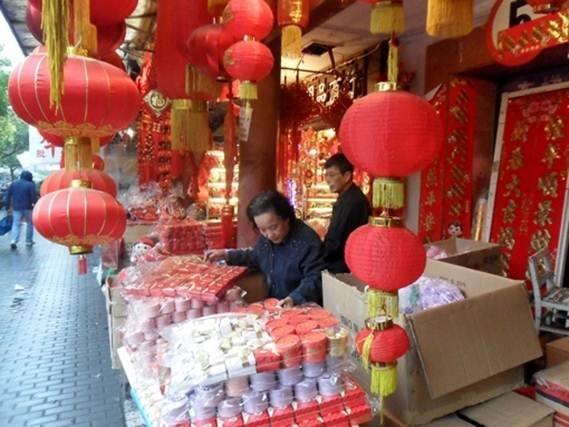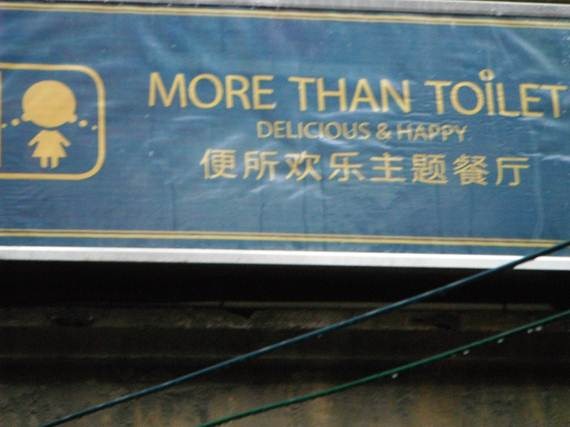China 4 - Shanghai

|
This was to be the shortest leg of our tour and we arrived late in Shanghai after a delayed flight which continued to suffer from turbulence so our visit was cut even shorter. This didn’t really matter as we were extending our stay beyond the tour and could have more time here if we chose. As it was we were greeted by heavy cloud and bad weather which you can see. Shanghai was wet. Our new guide Tom met us at the airport, just seven of us now as others had taken alternatives to Guilin such as Chengdu to see pandas, and river trips on the Yangtze. We were whisked off to our 5 star hotel which was just perfect. Even the name Shanghai seems to stir up excitement but we relaxed. One of the luxuries of the hotels we have had is the opportunity for a long soak in a deep bath; we have an indoor and an outdoor shower on the boat but occasionally we yearn for a bath. A delicious meal out with a Chinese beer in the old European quarter was followed by a good night’s sleep and we were ready for Shanghai. On our first morning we visited a famous classical Chinese garden. We were unprepared for the beauty we would find inside the garden walls and the rain just seemed to add to the atmosphere, it was just breath- taking.
Yuyuan Garden (Garden of Tranquillity) is 400 years old and was built by a Government officer for his parents to enjoy their old age. It has undergone many changes including dilapidation during the late Ming Dynasty as the original family ownership fell into decline. In 1760 it was bought by rich merchants who spent more than 20 years reconstructing the buildings. During the 19th Century Opium War with the shameful British it was severely damaged. Thankfully the garden has been subject to a five year restoration project started in 1956 and opening to the public in September 1961.
At around 5 acres this garden is considered small but with a unique character created by its six separate cloisters which cannot be fully seen one from the other thus surprising the senses when entering as they emphasise different aspects. The use of water is the essence of the design; ponds reflect the other elements and moving water together with plants like bamboo provide gentle sounds in the breeze. Large, strangely shaped rocks representing mountains give the garden structure together with small well-proportioned buildings such as pavilions and halls with windows and doorways placed to frame the scenic views in their courtyards and cloisters.
Paving of paths and courtyards and carving in the buildings is carefully integrated into the design often with symbolic detail of birds, mythical beasts flowers and leaves representative of Chinese beliefs.
The whole thing comes together to create peace and tranquillity and is a delight to behold. This whets our appetite for Souzhou, the garden city, where we go after Shanghai to see our son Peter. ~~~~~~ First though the Shanghai Silk Museum. And here they are, the cocoons of the silk worm that make the whole silk production process possible. The worm produces about 1,000 metres in its 28 day life span and just 30% of cocoons are taken to ensure the future of the silk moth.
The natural limits of its availability and the unique properties of silk create a secure market for silk goods. Regarded since ancient times as one of China’s most valued products The Silk Road provided the first routes of trade for China. The museum, of course, demonstrated traditional methods of silk production:
The worms, which are grown in captivity, feed exclusively on Mulberry leaves before they pupate.
The process is then fairly simple, the cocoons are put into water and joggled/stirred until the end of the silk thread is loosened, you might just see this on the cocoon at top right but the thread is extremely fine and difficult to see. The main problem at this stage is finding twins in a cocoon because the threads become tangled and are not suitable for high quality fabric production. This thread is used for other purposes such as pillows, duvets and jacket fillings which would have been a traditional use by those who could afford it instead of cotton wadding.
The silk thread is then wound onto spools ready for weaving. The silk industry is renowned for its beautiful textiles for clothing, upholstery, soft furnishings and carpets. However, the strength, non-flammability, insulation properties and ability to refract light make silk perfect for products such as parachutes, bicycle tyres, surgical sutures and bedding.
Here a silk duvet is being laid up with sheets of silk weave from the cocoons of twin pupae. We can testify as to the sumptuousness of the pillows as we brought a couple back with us to the boat, they are very comfortable in the tropical heat and humidity of Malaysia. ~~~~~~ Last of our busy morning visits was Shanghai Museum which amply showcases Chinese art, craft and civilisation. Here are some of our favourite exhibits, being created when we Brits were still running around in ragged animal skins probably painting ourselves blue
How could we follow this? Well we were joined once more by our fellow travellers who had 3 days in other parts of China and had a farewell lunch in one of Shanghai’s wonderful restaurants.
Is that a plate of sausage? No it is lotus root which is definitely one of our favourite dishes. The main courses were equally delicious and skilfully served. A good way to finish off our time in Shanghai was to go for a walk after lunch – we all needed it. ~~~~~~ Shanghai’s old city and the new commercial hub are separated by the Huangpu River. Born out of surrounding farmlands the burgeoning economic zone on the west side dominates and construction continues just about everywhere possible. I have never been to New York but I guess the west bank of Shanghai is China’s equivalent, a racy commercial capital full of cutting edge style, excitement and exuberance with an outrageously futuristic skyline that draws the eye upward.
The television tower with its restaurants and nightclubs looms over the river and at night the whole area eats power to feed its blue and green radiant glow. The road network is extremely sophisticated with many elevated roads. Unlike Beijing, traffic runs relatively smoothly because of a unique way of limiting car ownership: a set number of registration plates are available each year and they go into a Shanghai car ownership lottery, bids are very high and the revenue is used to support road maintenance and development. Losers must try again the next year. Shanghai also has a MagLev (magnetic levitation) train which streaks along at 400 kilometres an hour – yes this is China! High rise development is not allowed on the east side so the old city retains its character, it is also dominated but by traditional European architecture. The British Bund forms the wide promenade alongside the river, traditional European bank buildings face it across the road but commerce has changed on this side of the river and many of these buildings are exclusive hotels, offices including HSBC and upmarket shops selling Prada, Giorgio Armani, Louis Vuitton and the like – yes this is China!
Walls of flowers in the British Bund area, Huangpu River east side. Further in from the river is the French Concession area with Francophile architecture. Tianzifang has developed from a local residential area into a new zone with trendy restaurants & bars and bijou art & craft centres. This area feels accessible, friendly, fun and altogether less James Bond than the other side of the river.
Our euphemism is ‘The Loo’ for the Chinese it is ‘The Happy Room’ but perhaps DELICIOUS AND HAPPY is carrying it a bit far. Shanghai has given us a fantastic end to this tour with its incredible contrasts, energy and variety. Our final fling was a theatre visit to a mind- blowing acrobatic show which included a good comedy act. The Chinese definitely know how to put on a good show. So it is good bye Shanghai. We have really enjoyed the good company, humour and support of our fellow travellers from around the world and of our tour guides. Tomorrow morning we are on our own and take the bullet train to Suzhou. Just hope all our arrangements work as we cannot understand any signs or public notices that are in Chinese characters! |
